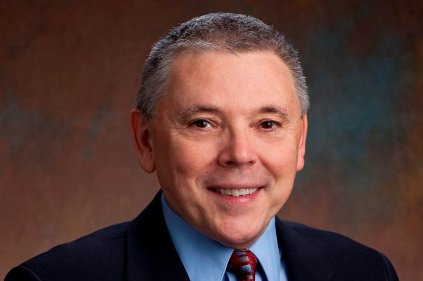User login
Health plans are starting to expand their coverage of palliative care, offering higher payments to physicians who meet certain standards or paying for home care for a wider range of seriously ill patients.
The offerings vary greatly by region and by plan, but the common theme is that these types of programs are on the rise.
Cambia Health Solutions, which operates six health plans in Oregon, Washington, Idaho, and Utah, recently garnered attention with the launch of a wide-ranging palliative care program.
Starting this year, Cambia plans will pay for services previously not covered, such as home health aides and advance care planning counseling. They are also partnering with the University of Washington to offer palliative care training to physicians, nurses, and social workers. Palliative care physicians will be able to earn certification through a 1-year program. There’s also a shorter training option in the works to teach primary care physicians how to start palliative care conversations and make referrals.
The program also aims to address the social needs of seriously ill patients by forming case management units with specially trained nurses and social workers who can assist members with issues such as home food delivery, according to Dr. Csaba Mera, chief medical officer at Cambia.
The new program’s goal is to build a "best in class" model that could be used nationally, Dr. Mera said. At the core of the program, he noted, is the goal of honoring the wishes of seriously ill patients.
"That has not been happening in health care," he said. "It’s amazing how often somebody decides they don’t want certain kinds of treatment, and they still get it."
While Cambia’s program is wide reaching, the health plan is not the only payer active in palliative care. The insurance giant Aetna has a decade of experience with specialized case management services designed to help patients and caregivers coping with advanced illness.
Through Aetna’s Compassionate Care Program, nurses and social workers work with physicians’ offices and patients and their families to provide education, assistance with pain medications, and other psychosocial support. They also work to ensure that advance directives are in place and followed. In most cases, the case managers are located in call centers. But increasingly, the health plan has embedded them in the offices of participating medical groups.
The case managers are "almost a lifeline" to patients and their families, explained Dr. Randall Krakauer, Aetna’s vice president and national medical director for medical strategy.
It’s also been a no-brainer for Aetna financially. The specialized case managers, who are used in both commercial and Medicare Advantage plans, have significantly reduced costly hospital stays and the use of the emergency department. There’s typically a $12,000 decrease in costs for each person enrolled in the case management program, according to Aetna.
Among Aetna Medicare Advantage members, there has been an 82% drop in days spent in the hospital for acute care, an 86% drop in days spent in the intensive care unit, and a 78% drop in use of the emergency department.
"If there is an opportunity for favorable impact at the intersection of quality and cost, particularly in Medicare, this is in fact the mother lode," Dr. Krakauer said.
Some regional payers have also begun to partner with physicians and other providers in the community to offer more than just traditional hospice coverage. For instance, Excellus BlueCross BlueShield, which operates in upstate New York, worked with the University of Rochester Medical Center to develop courses for physicians that focus on advance care planning, how to use the Medical Orders for Life-Sustaining Treatment (MOLST) protocol, and myths about CPR and life-sustaining treatment. Physicians who complete the online training and a testing module about it can qualify for bonus payments.
Highmark, which operates in Pennsylvania, Delaware, and West Virginia, set up a palliative care indicator to measure the performance of its contracted hospitals. The insurer measures the percentage of patients who have a palliative care consult, and the percentage of adult intensive care unit patients who have a documented resuscitation status, designated health care proxy, and documented interdisciplinary family meeting.
What’s driving the expansion into palliative care? Part of the reason is demographics, noted J. Donald Schumacher, Psy.D., president and CEO of the National Hospice and Palliative Care Organization. Baby boomers are aging and will demand health care on their own terms, including having help with both their medical and psychosocial needs when dealing with serious illness.
"I think it’s great the health plans are doing it," he said. "People are asking for good pain and symptom management now more than ever before."
The growth of accountable care organizations (ACOs) is also driving the expansion of palliative care programs. Because ACOs assume risk for the total cost of their members’ health care, expanding palliative care services in the community offers the potential to lower costly hospital admissions and readmissions, Dr. Schumacher said. Even though ACOs are developing very differently depending on the local community, they all seem interested in hospice and palliative care programs, he said.
Dr. Diane E. Meier, director of the Center to Advance Palliative Care, recently created a toolkit for payers outlining the rationale for establishing a palliative program and elements with a proven track record of improving quality and decreasing costs. For instance, a meaningful 24/7 clinical response is an essential element, she said, because it keeps patients from calling 911 frequently and ending up in the emergency department.
"Payers are recognizing that the reason their members don’t get access to palliative care in the community is because no one will pay for it – and they can fix that," said Dr. Meier, who is also a professor of geriatrics and palliative medicine at Mount Sinai Hospital in New York.
But expanding access to palliative care is likely to take more than just financial incentives, said Dr. Krakauer. The difficulty in making changes to health care delivery is one obstacle, he said. Another issue is that palliative care still runs contrary to the medical culture.
"A physician might feel that this represents personal failure as a professional, and he may feel that this is not what his patients would expect of him," Dr. Krakauer said. "We know this isn’t true, but I think that this type of feeling is persistent."
On Twitter @maryellenny
Health plans are starting to expand their coverage of palliative care, offering higher payments to physicians who meet certain standards or paying for home care for a wider range of seriously ill patients.
The offerings vary greatly by region and by plan, but the common theme is that these types of programs are on the rise.
Cambia Health Solutions, which operates six health plans in Oregon, Washington, Idaho, and Utah, recently garnered attention with the launch of a wide-ranging palliative care program.
Starting this year, Cambia plans will pay for services previously not covered, such as home health aides and advance care planning counseling. They are also partnering with the University of Washington to offer palliative care training to physicians, nurses, and social workers. Palliative care physicians will be able to earn certification through a 1-year program. There’s also a shorter training option in the works to teach primary care physicians how to start palliative care conversations and make referrals.
The program also aims to address the social needs of seriously ill patients by forming case management units with specially trained nurses and social workers who can assist members with issues such as home food delivery, according to Dr. Csaba Mera, chief medical officer at Cambia.
The new program’s goal is to build a "best in class" model that could be used nationally, Dr. Mera said. At the core of the program, he noted, is the goal of honoring the wishes of seriously ill patients.
"That has not been happening in health care," he said. "It’s amazing how often somebody decides they don’t want certain kinds of treatment, and they still get it."
While Cambia’s program is wide reaching, the health plan is not the only payer active in palliative care. The insurance giant Aetna has a decade of experience with specialized case management services designed to help patients and caregivers coping with advanced illness.
Through Aetna’s Compassionate Care Program, nurses and social workers work with physicians’ offices and patients and their families to provide education, assistance with pain medications, and other psychosocial support. They also work to ensure that advance directives are in place and followed. In most cases, the case managers are located in call centers. But increasingly, the health plan has embedded them in the offices of participating medical groups.
The case managers are "almost a lifeline" to patients and their families, explained Dr. Randall Krakauer, Aetna’s vice president and national medical director for medical strategy.
It’s also been a no-brainer for Aetna financially. The specialized case managers, who are used in both commercial and Medicare Advantage plans, have significantly reduced costly hospital stays and the use of the emergency department. There’s typically a $12,000 decrease in costs for each person enrolled in the case management program, according to Aetna.
Among Aetna Medicare Advantage members, there has been an 82% drop in days spent in the hospital for acute care, an 86% drop in days spent in the intensive care unit, and a 78% drop in use of the emergency department.
"If there is an opportunity for favorable impact at the intersection of quality and cost, particularly in Medicare, this is in fact the mother lode," Dr. Krakauer said.
Some regional payers have also begun to partner with physicians and other providers in the community to offer more than just traditional hospice coverage. For instance, Excellus BlueCross BlueShield, which operates in upstate New York, worked with the University of Rochester Medical Center to develop courses for physicians that focus on advance care planning, how to use the Medical Orders for Life-Sustaining Treatment (MOLST) protocol, and myths about CPR and life-sustaining treatment. Physicians who complete the online training and a testing module about it can qualify for bonus payments.
Highmark, which operates in Pennsylvania, Delaware, and West Virginia, set up a palliative care indicator to measure the performance of its contracted hospitals. The insurer measures the percentage of patients who have a palliative care consult, and the percentage of adult intensive care unit patients who have a documented resuscitation status, designated health care proxy, and documented interdisciplinary family meeting.
What’s driving the expansion into palliative care? Part of the reason is demographics, noted J. Donald Schumacher, Psy.D., president and CEO of the National Hospice and Palliative Care Organization. Baby boomers are aging and will demand health care on their own terms, including having help with both their medical and psychosocial needs when dealing with serious illness.
"I think it’s great the health plans are doing it," he said. "People are asking for good pain and symptom management now more than ever before."
The growth of accountable care organizations (ACOs) is also driving the expansion of palliative care programs. Because ACOs assume risk for the total cost of their members’ health care, expanding palliative care services in the community offers the potential to lower costly hospital admissions and readmissions, Dr. Schumacher said. Even though ACOs are developing very differently depending on the local community, they all seem interested in hospice and palliative care programs, he said.
Dr. Diane E. Meier, director of the Center to Advance Palliative Care, recently created a toolkit for payers outlining the rationale for establishing a palliative program and elements with a proven track record of improving quality and decreasing costs. For instance, a meaningful 24/7 clinical response is an essential element, she said, because it keeps patients from calling 911 frequently and ending up in the emergency department.
"Payers are recognizing that the reason their members don’t get access to palliative care in the community is because no one will pay for it – and they can fix that," said Dr. Meier, who is also a professor of geriatrics and palliative medicine at Mount Sinai Hospital in New York.
But expanding access to palliative care is likely to take more than just financial incentives, said Dr. Krakauer. The difficulty in making changes to health care delivery is one obstacle, he said. Another issue is that palliative care still runs contrary to the medical culture.
"A physician might feel that this represents personal failure as a professional, and he may feel that this is not what his patients would expect of him," Dr. Krakauer said. "We know this isn’t true, but I think that this type of feeling is persistent."
On Twitter @maryellenny
Health plans are starting to expand their coverage of palliative care, offering higher payments to physicians who meet certain standards or paying for home care for a wider range of seriously ill patients.
The offerings vary greatly by region and by plan, but the common theme is that these types of programs are on the rise.
Cambia Health Solutions, which operates six health plans in Oregon, Washington, Idaho, and Utah, recently garnered attention with the launch of a wide-ranging palliative care program.
Starting this year, Cambia plans will pay for services previously not covered, such as home health aides and advance care planning counseling. They are also partnering with the University of Washington to offer palliative care training to physicians, nurses, and social workers. Palliative care physicians will be able to earn certification through a 1-year program. There’s also a shorter training option in the works to teach primary care physicians how to start palliative care conversations and make referrals.
The program also aims to address the social needs of seriously ill patients by forming case management units with specially trained nurses and social workers who can assist members with issues such as home food delivery, according to Dr. Csaba Mera, chief medical officer at Cambia.
The new program’s goal is to build a "best in class" model that could be used nationally, Dr. Mera said. At the core of the program, he noted, is the goal of honoring the wishes of seriously ill patients.
"That has not been happening in health care," he said. "It’s amazing how often somebody decides they don’t want certain kinds of treatment, and they still get it."
While Cambia’s program is wide reaching, the health plan is not the only payer active in palliative care. The insurance giant Aetna has a decade of experience with specialized case management services designed to help patients and caregivers coping with advanced illness.
Through Aetna’s Compassionate Care Program, nurses and social workers work with physicians’ offices and patients and their families to provide education, assistance with pain medications, and other psychosocial support. They also work to ensure that advance directives are in place and followed. In most cases, the case managers are located in call centers. But increasingly, the health plan has embedded them in the offices of participating medical groups.
The case managers are "almost a lifeline" to patients and their families, explained Dr. Randall Krakauer, Aetna’s vice president and national medical director for medical strategy.
It’s also been a no-brainer for Aetna financially. The specialized case managers, who are used in both commercial and Medicare Advantage plans, have significantly reduced costly hospital stays and the use of the emergency department. There’s typically a $12,000 decrease in costs for each person enrolled in the case management program, according to Aetna.
Among Aetna Medicare Advantage members, there has been an 82% drop in days spent in the hospital for acute care, an 86% drop in days spent in the intensive care unit, and a 78% drop in use of the emergency department.
"If there is an opportunity for favorable impact at the intersection of quality and cost, particularly in Medicare, this is in fact the mother lode," Dr. Krakauer said.
Some regional payers have also begun to partner with physicians and other providers in the community to offer more than just traditional hospice coverage. For instance, Excellus BlueCross BlueShield, which operates in upstate New York, worked with the University of Rochester Medical Center to develop courses for physicians that focus on advance care planning, how to use the Medical Orders for Life-Sustaining Treatment (MOLST) protocol, and myths about CPR and life-sustaining treatment. Physicians who complete the online training and a testing module about it can qualify for bonus payments.
Highmark, which operates in Pennsylvania, Delaware, and West Virginia, set up a palliative care indicator to measure the performance of its contracted hospitals. The insurer measures the percentage of patients who have a palliative care consult, and the percentage of adult intensive care unit patients who have a documented resuscitation status, designated health care proxy, and documented interdisciplinary family meeting.
What’s driving the expansion into palliative care? Part of the reason is demographics, noted J. Donald Schumacher, Psy.D., president and CEO of the National Hospice and Palliative Care Organization. Baby boomers are aging and will demand health care on their own terms, including having help with both their medical and psychosocial needs when dealing with serious illness.
"I think it’s great the health plans are doing it," he said. "People are asking for good pain and symptom management now more than ever before."
The growth of accountable care organizations (ACOs) is also driving the expansion of palliative care programs. Because ACOs assume risk for the total cost of their members’ health care, expanding palliative care services in the community offers the potential to lower costly hospital admissions and readmissions, Dr. Schumacher said. Even though ACOs are developing very differently depending on the local community, they all seem interested in hospice and palliative care programs, he said.
Dr. Diane E. Meier, director of the Center to Advance Palliative Care, recently created a toolkit for payers outlining the rationale for establishing a palliative program and elements with a proven track record of improving quality and decreasing costs. For instance, a meaningful 24/7 clinical response is an essential element, she said, because it keeps patients from calling 911 frequently and ending up in the emergency department.
"Payers are recognizing that the reason their members don’t get access to palliative care in the community is because no one will pay for it – and they can fix that," said Dr. Meier, who is also a professor of geriatrics and palliative medicine at Mount Sinai Hospital in New York.
But expanding access to palliative care is likely to take more than just financial incentives, said Dr. Krakauer. The difficulty in making changes to health care delivery is one obstacle, he said. Another issue is that palliative care still runs contrary to the medical culture.
"A physician might feel that this represents personal failure as a professional, and he may feel that this is not what his patients would expect of him," Dr. Krakauer said. "We know this isn’t true, but I think that this type of feeling is persistent."
On Twitter @maryellenny



